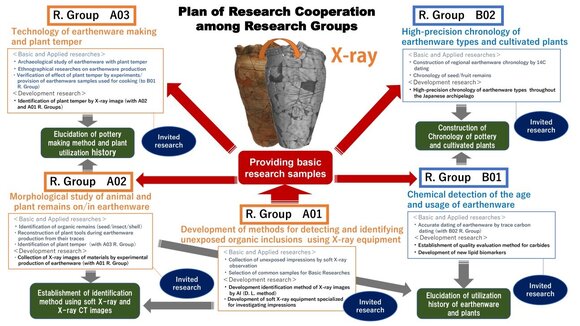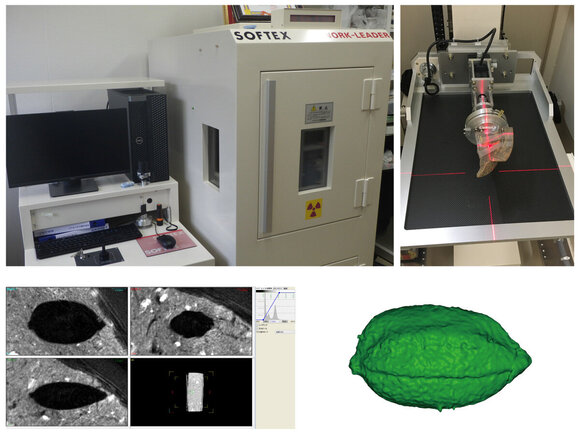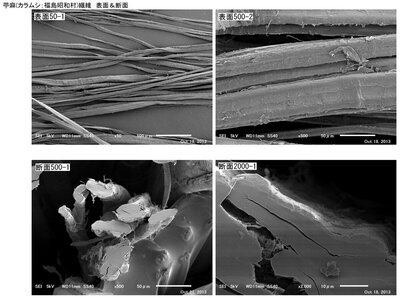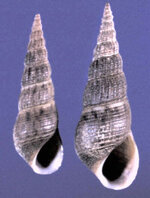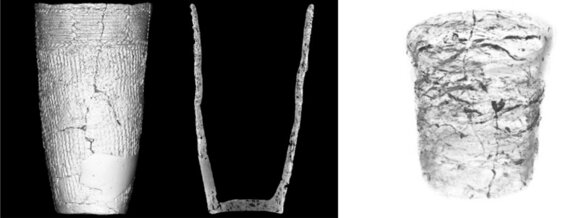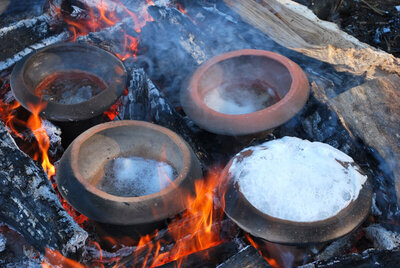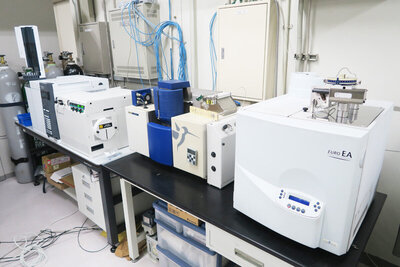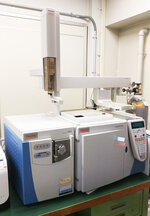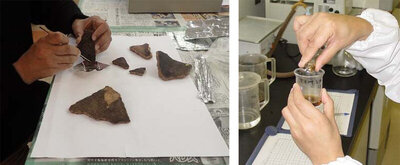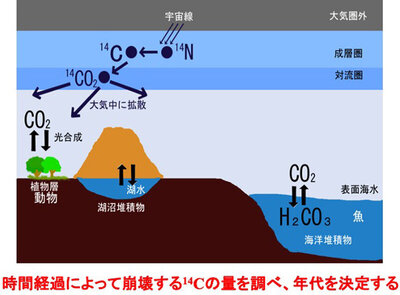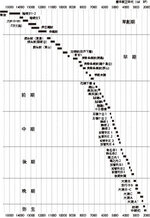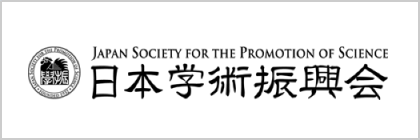For the smooth promotion of research, the following five groups have been organized into two groups, the archaeology group and the chemistry group. The cooperation of each group is closely maintained through the sharing of basic materials obtained by the A01 group, and further improvement of research results is expected.
Organization of Group for research integration
| Leader |
|
|---|---|
| Member |
|
The purpose of each Research Gropes and the methods
A01 Group
In this research project, to overcome the limitations of the pre-existing "the earthenware impression method" and stably obtain basic materials that make discussions about our academic interests more accurate, X-ray equipment is installed at the forefront of relics arrangement (administrative organization), and a large amount of earthenware will be investigated with the equipment thoroughly. Then, the traces of organisms found inside and outside the earthenware, such as stuck materials by fire, embedded carbonized organism, and organic inclusions as temper will be used as samples for each group of the research project. When the emergence and diffusion of cultivated plants in the Jomon period and continental grains (rice, foxtail millet, etc.) in the Yayoi period will be discussed these samples will be a clue to prove their timing and diffusion process scientifically. If this implementation experiment in the administrative field is successful, it will greatly contribute to the construction of the next century type archaeological material science "Earthenware Comprehensive Analysis" which is the purpose of the research project. For specific research, a soft X-ray device with an X-ray CT function will be installed in the cooperating administrative agency, and the earthenware in each region will be thoroughly investigated. The results will be provided to each research group as basic research materials. At the same time, we will develop an X-ray image identification method using AI (DL method) and develop soft X-ray equipment specializing in exploring organic inclusion surveys.
- Organization of A01 Research Group
-
Leader - OBATA Hiroki(KUMAMOTO University : Archaeology)
A02 Group
This research group conducts morphological studies on pottery impressions and cavities made by organisms remaining inside and outside the pottery and animal and plant remains attached to the pottery. Animals and plants, including insects and shellfish, that remain in the clay as impressions or cavities, those used during the production of earthenware, and their scorched remains on earthenware surfaces are deformed due to these various processes and lose their original morphology. Thus, it becomes complicated to identify these organic remains from conventional morphological methods. In this research group, we will create a reference data set for artificially processed and deformed animal and plant remains detected inside and outside the pottery and develop a new method of morphological identification. We also examine the various uses of identified animals and plant from their ecology and efficacy, such as for food, dyes, medicinal purposes, and soup stock. As basic research, we identify impressions or cavities of seeds, fibres, woods, insects, shellfish, and fabrics that can be seen as X-ray images of earthenware (Research 1). As an applied research, we identify animal and plant materials remaining as scorched seeds or fruits nuts and fibres on pottery surfaces, fibres contained in the clay as plant temper, and traces of rugs and tools used during pottery production (Research 2). As developmental studies, we prepare a modern reference for specimens of processed and deformed animals and plants that can be referred to when identifying remains (Research 3), develop an identification method of cavities made by organisms in earthenware using X-ray images (Research 4). By integrating these results, we will pursue the ecology and utility of used animals and plants scientifically or chemically and show the actual conditions of earthenware production and use.
- Organization of A02 Research Group
-
Leader - SASAKI Yuka(TOKYO University:Archaeology)
Member - ITO Mika(SHOWA WOMEN7S University:Textile manufacturing)
- NOSHIRO Shuichi(MEIJI University:Wood anatomy)
- SHUTO Tsuyoshi(KUMAMOTO University:Pharmacy)
- YOSHITOMI Hiroyuki(EHIME University:Entomology)
A03 Group
The main purpose of this research group is to restore the manufacturing technology of fibre-tempered earthenware. The reason why this porous earthenware, which is unsuitable for storage and cooking, has been used for more than 1000 years in the early Jomon period and the species of the plant used are almost unknown. In this study, (1) Using the X-ray images of earthenware taken by Group A01, the shape of the plant temper and the distribution in the wall of the earthenware will be examined. We will restore the earthenware making technology using plant tempers comparing the information on possible plant species provided by Group A02 and archaeological and ethnographic cases in other countries. (2) We will verify the functional difference between the earthenware with inorganic temper and those with fibre temper by measuring physical properties through experiments. (3) Quantitative and qualitative analysis of phytolith in earthenware bodies will be conducted to explore the possibility of mixing plants containing phytolith. At the same time, methods for obtaining environmental and livelihood information from earthenware paste will be examined.
- Organization of A03 Research Group
-
Leader - ABE Akinori(CHIBA University:Archaeology)
Member - NISHIDA Yasutami(The NIIGATA Prefectural Museum of History:Archaeology)
- UDATSU Tetsuro(MIYAZAKI University:Agricultural Science)
- MIZUNOE Kazutomo(DOSHISHA University:Archaeology)
B01 Group
In this research, to restore the history of earthenware from the viewpoints of "time" and "palaeo-eating", we analyze organic matter remaining in earthenware in various states such as embedding, adhesion, and adsorption carbide by radiocarbon dating, lipid analysis, and carbon/nitrogen isotope analysis. In the "basic research", to reveal introduction time of cultivated plants (legumes and perilla) in the Jomon period and the continental grains (rice, foxtail millet, common millet, wheat) in the transition period of Jomon to Yayoi, we analyze carbonized small seeds that are incorporated into earthenware fabric using a minute carbon dating method. And by estimating the ratio of the cultivated plants and the continental grains, we restore the regional transmission process of agriculture. In "Applied Research", from Yayoi to the Kofun period, grain cooking such as "simmered and stir-fried" is carried out by an interdisciplinary approach of classifying vessel types and shapes, observing traces of use, and analyzing lipids, regardless of the presence or absence of seed impressions. We aim to restore the food at that time (quantitative restoration of cultivated plants and continental grains utilization ratio) by adding the characteristic cooking style. Furthermore, as "development research", we will develop new research methods such as "lipid biomarkers" and "quality evaluation methods that can estimate the history of carbides".
- Organization of B01 Research Group
-
Leader - KUNIKITA Dai(HOKKAIDO University:Chronology・Archaeology)
Member - MIYATA Yoshiki(TOKYO University:Chemical Science)
Group B02
This research group aims to build a high-precision chronology of earthenware types and cultivated plants. Therefore, we complete the actual dating system by the carbon 14 dating method of the Japanese Neolithic culture and compare them with the ecological history restored from the earthenware embedding organic inclusions obtained in the basic research in of other research groups. To make it possible, we will adopt a large amount of earthenware-embedded carbon (grains and nuts) detected by soft X-ray equipment and a measurement by the trace carbon measurement method. This makes it possible to accurately depict the origin of cultivated plants and the influx and diffusion of continental grains over time. Furthermore, as "Applied Research", we apply natural science analysis both to restoration of eating habits by isotope analysis and to grasp cultivated plants cooking in earthenware that reflects the degree of settlement and livelihood. Based on dating of earthenware-embedded carbon we create a foundation for systematizing the relationship between the natural environment and cultural changes in East Asian Neolithic culture such as the Japanese archipelago, the Korean Peninsula, and mainland China, and the history of interregional exchange. Ultimately, we aim to give a real age without error in prehistoric times, complement each other with various dating methods, and develop new research methods by natural science and archaeology. This makes it possible to achieve high-precision actual chronology of earthenware type chronology (in units of several decades), wide-area comparison at the world history level, and to respond to cultural changes due to actual age of changes in the ecological environment. And, it can grasp changes in eating habits due to differences in specific gravity for plant resources and marine resources and cultural changes due to the restoration of the frequency of use of useful plants. The research will present a new prehistoric image that systematizes the process from the first appearance of earthenware and settlement lifestyles to the adoption of agriculture.
- Organization of B02 research Grope
-
Leader - KOBAYASHI Ken'ichi(CHUO University:Archaeology・Chronology)
Member - NEGISHI You(AKITA International University:Archaeology)
- SHIBATA Shoji(EHIME University:Archaeology)
